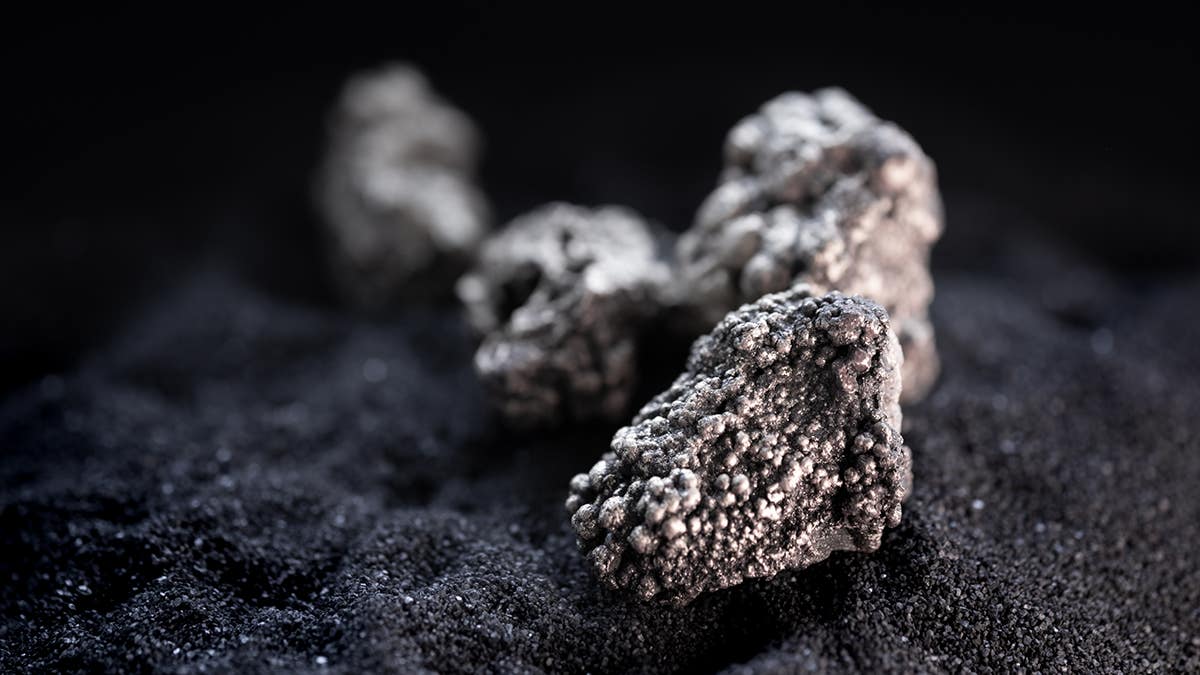Breakthrough new treatment developed for retinitis pigmentosa
Scientists discover JC3 and JC4, non-retinoid compounds that stabilize rhodopsin and protect retinal cells, offering hope for RP patients.

Researchers identify JC3 and JC4, groundbreaking compounds that correct rhodopsin misfolding, protecting retinal cells and offering hope for RP therapy. (CREDIT: Pixabay)
Inherited eye disorders such as retinitis pigmentosa (RP) leave millions grappling with progressive vision loss. At the heart of this issue is the protein rhodopsin, which, due to genetic mutations, often misfolds. This misfolding disrupts its function, leading to retinal cell degeneration.
Scientists have been striving to develop treatments, and new research provides a promising breakthrough: two non-retinoid compounds, JC3 and JC4, show potential to correct rhodopsin misfolding and protect retinal cells.
The quest to identify effective treatments for RP has driven scientists to explore small molecules that stabilize rhodopsin’s structure. Using virtual screening methods, researchers analyzed libraries of non-retinoid compounds. Among them, JC3 and JC4 stood out due to their ability to bind to rhodopsin’s orthosteric site, stabilizing its folding and improving its cellular movement.
These compounds demonstrated high binding affinity, with dissociation constants (Kd) of 175 ± 20 nM and 98.5 ± 33 nM for JC3 and JC4, respectively. This high affinity suggests they interact effectively with rhodopsin, a critical step toward therapeutic application.
In computational studies, JC3 and JC4 showed favorable interactions with key residues in rhodopsin’s binding pocket. They mimic the stabilization provided by natural chromophores but without the drawbacks of retinoid-based treatments. Notably, these compounds form direct interactions with residues such as Ala117 and Tyr191, critical for rhodopsin’s structural integrity.
The identification of these compounds followed an extensive pharmacophore-based screening process. This technique involved comparing the structural and chemical properties of rhodopsin ligands to find molecules with similar binding capabilities. JC3 and JC4’s strong interactions with rhodopsin highlight the power of computational modeling in accelerating drug discovery.
Current experimental treatments for RP, including synthetic vitamin A derivatives, face significant limitations. These compounds are sensitive to light, chemically reactive, and often toxic. In contrast, JC3 and JC4 exhibit drug-like properties, including stability, solubility, and the ability to cross both the blood-brain and blood-retina barriers. These attributes are crucial for their therapeutic potential.
Pharmacological profiling using SWISSADME tools confirmed that JC3 and JC4 meet key criteria for oral bioavailability. They do not violate Lipinski’s rule of five, indicating their suitability as drug candidates. Their predicted ability to cross the blood-retina barrier is particularly important for targeting retinal cells.
The compounds’ ability to cross the blood-retina barrier stems from their optimized molecular size and polarity. Such features enable them to reach retinal cells effectively, a challenge for many potential drug candidates. Additionally, JC3 and JC4’s moderate solubility ensures they can be administered orally, a significant advantage for patient compliance.
Related Stories
The efficacy of JC3 and JC4 was tested using a combination of biochemical assays, cellular studies, and animal models. In vitro assays demonstrated that these compounds enhance the stability of rhodopsin and improve its expression in cells harboring the common P23H mutation—a prevalent cause of RP. They corrected folding defects and facilitated the proper trafficking of rhodopsin to the cell membrane.
Deep mutational scanning revealed that JC3 and JC4 effectively corrected 36 of 123 tested RP-associated rhodopsin variants. This includes some variants that are unresponsive to traditional retinoid therapies. Structural models suggest that these compounds reduce fluctuations caused by mutations and restore a more stable, wild-type-like conformation.
Importantly, JC3 and JC4’s effects were not limited to correcting the P23H mutation. They demonstrated activity across a spectrum of genetic variants, showcasing their broad therapeutic potential. The compounds’ ability to stabilize multiple rhodopsin variants underscores their versatility and importance in addressing the diverse genetic landscape of RP.
Animal studies further validated their therapeutic potential. In mouse models of retinal degeneration, including P23H Rho knock-in mice, JC3 and JC4 protected photoreceptors from cell death. These compounds also improved retinal health and function in models exposed to bright light, a condition that accelerates retinal damage.
The protective effects observed in these models extend beyond simple stabilization of rhodopsin. JC3 and JC4 reduced structural fluctuations within rhodopsin’s binding pocket, enhancing overall protein stability. This mechanism of action not only preserves retinal cells but also improves their function, offering a comprehensive approach to RP treatment.
The development of precision therapies for RP hinges on identifying pharmacological chaperones that target specific genetic mutations. JC3 and JC4 represent a significant step forward. They demonstrate the potential to not only stabilize misfolded rhodopsin but also protect retinal cells from degeneration.
“Treatment with either compound improved overall retina health and function by prolonging photoreceptor survival,” the researchers noted. These findings highlight the promise of non-retinoid pharmacochaperones in managing RP. However, further studies are needed to optimize these compounds and assess their safety and efficacy in human trials.
The versatility of JC3 and JC4 also opens the door for combination therapies. By pairing these compounds with existing treatments, it may be possible to address a broader range of RP variants. This approach mirrors strategies used in cystic fibrosis treatments, where targeted therapies address specific genetic mutations.
Moreover, the precision offered by JC3 and JC4 could reduce side effects associated with non-specific treatments. By targeting the root cause of rhodopsin misfolding, these compounds minimize off-target effects, making them safer for long-term use.
Retinitis pigmentosa affects over 100,000 people in the United States alone, with no approved treatments currently available. The discovery of JC3 and JC4 offers a glimmer of hope for those living with this debilitating condition. By targeting the root cause of rhodopsin misfolding, these compounds may pave the way for transformative therapies.
While challenges remain, the progress made in this study underscores the power of computational-aided drug discovery. Published in, PLOS Biology, it provides a roadmap for developing targeted treatments that address the underlying mechanisms of genetic disorders. For individuals facing the prospect of vision loss, advancements like these represent a critical step toward preserving sight and improving quality of life.
Further exploration of JC3 and JC4’s mechanisms could reveal additional therapeutic applications. Their ability to stabilize misfolded proteins may extend to other protein misfolding diseases, broadening their impact beyond RP. This potential makes these compounds valuable not only for vision preservation but also for the treatment of other debilitating conditions.
The path to human trials is still ahead, but the foundation laid by these studies is promising. Researchers aim to refine JC3 and JC4’s pharmacological profiles, ensuring their safety and effectiveness in diverse patient populations. Collaboration between researchers, clinicians, and pharmaceutical companies will be vital in translating these findings into real-world treatments.
As research progresses, the hope is that JC3 and JC4 will not only halt the progression of RP but also restore lost vision in affected individuals.
For now, their discovery marks a pivotal moment in the fight against inherited blindness, providing a beacon of hope for patients and families worldwide.
Note: Materials provided above by The Brighter Side of News. Content may be edited for style and length.
Like these feel good stories? Get The Brighter Side of News' newsletter.
Joshua Shavit
Science & Technology Writer | AI and Robotics Reporter
Joshua Shavit is a Los Angeles-based science and technology writer with a passion for exploring the breakthroughs shaping the future. As a contributor to The Brighter Side of News, he focuses on positive and transformative advancements in AI, technology, physics, engineering, robotics and space science. Joshua is currently working towards a Bachelor of Science in Business Administration at the University of California, Berkeley. He combines his academic background with a talent for storytelling, making complex scientific discoveries engaging and accessible. His work highlights the innovators behind the ideas, bringing readers closer to the people driving progress.



